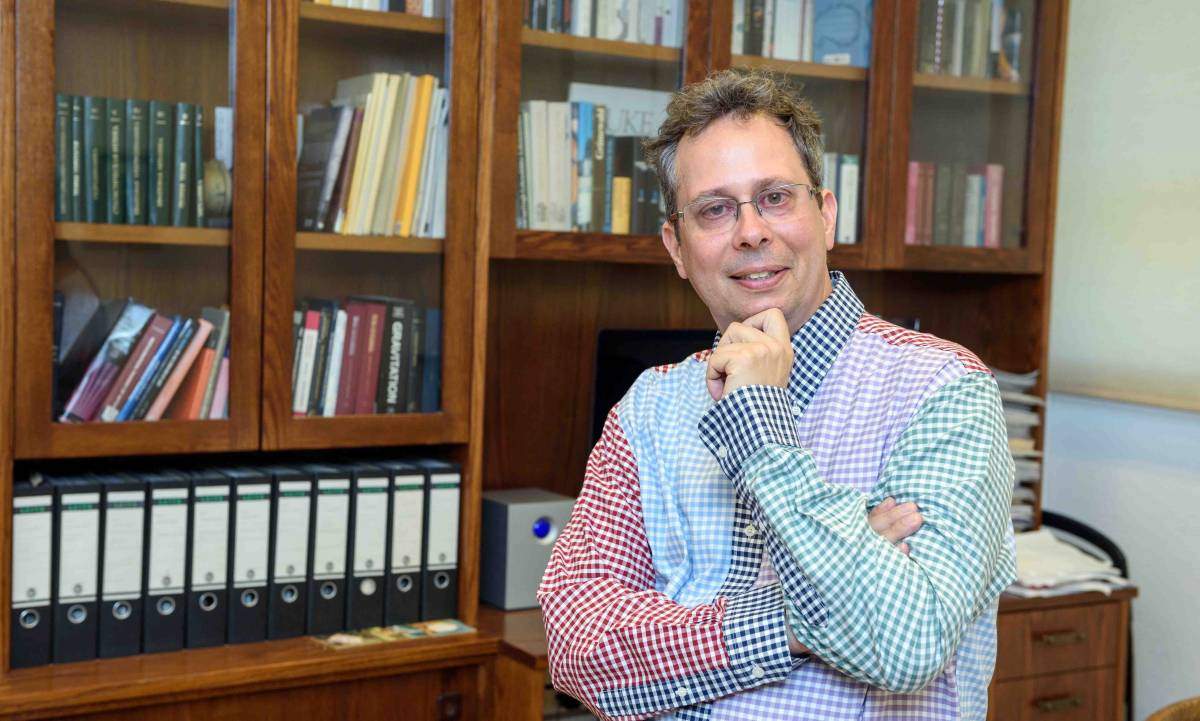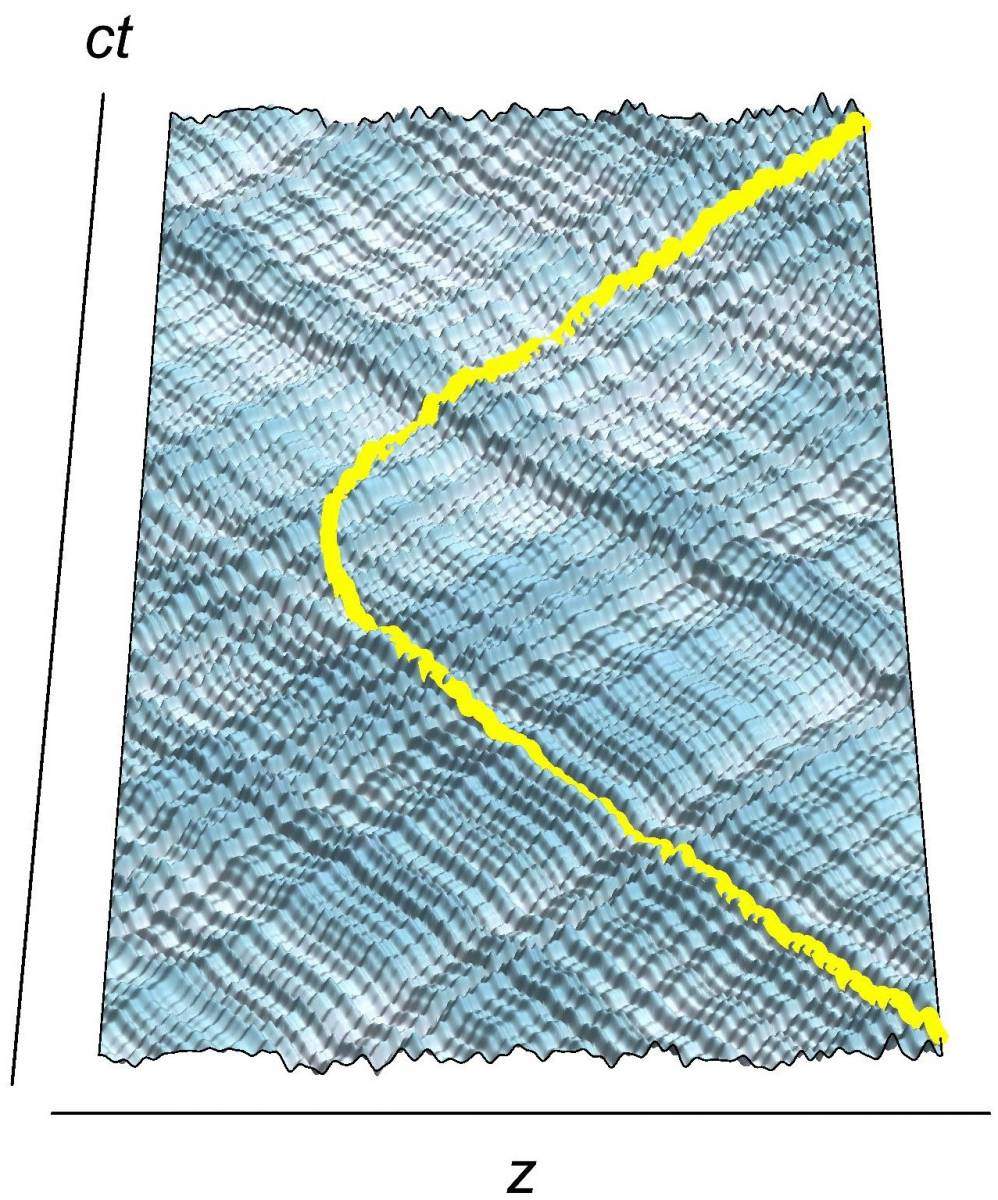Are you a journalist? Please sign up here for our press releases
Subscribe to our monthly newsletter:

If you somehow found yourself in deep outer space travelling at a constant speed, you would not feel yourself moving. In the total quiet of the vacuum, you would only experience starlight; and the light waves would not appear to change, even as you floated across their paths. But if you were to suddenly accelerate, something quite different would occur: The space around you would be filled with particles that give off heat. This effect, known as the Unruh effect after one of its discoverers, arises from predictions of Einstein’s General Theory of Relativity.
Of course no such space travel exists quite yet, and there has been no real demonstration of the effect here on Earth – until now. Prof. Ulf Leonhardt of the Physics of Complex Systems Department, together with colleagues in France, demonstrated an analogous effect using a tank of water, some mirrors and cameras, and some highly sophisticated algorithms. The effect is thought to occur in a so-called quantum vacuum, but the researchers now think that the Unruh effect can also happen in everyday space.

A quantum vacuum, explains Leonhardt, is not really empty space. Rather, it is space in which the particles are always in a ground state – the lowest possible energy state. Despite this condition, there is constant fluctuation in the quantum vacuum – electromagnetic waves for example, come into existence and disappear or particles pop in and drop out again. “Quantum vacuum is something like a sea of possibilities, or else a form of credit that can be borrowed on and repaid. This is what gives rise to the fluctuations,” says Leonhardt.
Some think that the quantum vacuum is also medium for light, something like air through which sound waves move. But, unlike sound waves, which change as we move closer or farther from the source of the sound, light waves only change to an observer who is also speeding up or slowing down. Acceleration, then, is a form of borrowing, tying the change in light to the heated particles the traveler acquires in the quantum vacuum. These particles form a wake around the observer similar to the Hawking radiation that creates an event horizon near a black hole. Leonhardt says that researchers are interested in the Unruh effect because it brings together three fields of physics – general relativity, quantum physics and thermodynamics – in an unusual way.
The problems, for experimental physicists, arise from the fact that to produce enough thermal radiation to actually measure the Unruh effect, one would need a very large quantum vacuum, extreme acceleration and an endless amount of time. Plus the fluctuations in a quantum vacuum are sub-nanoscopic – they are defined in terms of Planck’s constant, which is the smallest anything can get, so they would be extremely difficult to measure.
Leonhardt, his research student Itay Griniasty, and Prof. Mathias Fink and his group in the PSL Research University, Paris, France, sought an alternate system that would mimic the Unruh effect. They designed such a system in a long, narrow, clear tank of water. Vibrating the tank from below produced ripples – standing waves that have many similar properties to light waves, but move at a fraction of the speed. And the size of the fluctuations is, of course, macroscopic – visible to the naked eye. In such a system, the acceleration can be much, much slower than that needed for the quantum vacuum version.
The Unruh effect brings together three fields of physics – general relativity, quantum physics and thermodynamics – in an unusual way
To begin with, the research team also invented a stand-in for the accelerating traveler by pointing a laser beam at a mirror above the water’s surface and moving the mirror back and forth. But they soon realized that the laser was not necessary: They could simulate the traveler within the data analysis.
The video camera recorded every ripple on the surface of the water, and the computer analysis then broke down the data on 100 cycles into its component parts. “The spectral analysis we performed is like that done on light waves, or even sound waves to separate out pitch, tone, frequency and decibels,” says Leonhardt. “We could predict what the signature of acceleration would look like through those waves – if you follow a certain trajectory, fluctuation on top of the basic waves should be thermal in nature. These, indeed, corresponded to the noise you would feel in quantum space from the thermal radiation of the particles.”
“And then we added another twist,” says Leonhardt. “A second observer.” The theory suggests that if two observers are moving in mirror trajectories, decelerating as they approach one another and then accelerating back away in perfect synchronization, each would observe random particles, or noise; but when they compare notes, the two will have experienced those particles at exactly the same time. In the experiment, a mirror stood in for the identical-twin observer. Decomposing the recorded waves into their spectral components showed that the timing was, indeed, synchronized in the way predicted by the theory. “Two observers – even ones that are far away from one another – comparing notes would find that they had felt identical photons or ‘noise’ at the exact same time.”
What are we to make of the fact that the random fluctuations in the system are correlated between two observers? Leonhardt explains that what appears to be disorganized in space and arbitrary in time is not quite as random as it seems. It is organized in spacetime, and this is how the correlations arise. Non-random noise, he adds, contains information, making it potentially very interesting for further study.
“We showed, with a very basic system, for the first time that we know of experimentally, that you don’t need quantum fluctuations to observe the Unruh effect,” says Leonhardt. “This hints at a deeper reality: The effect may arise from classical physics and not necessarily quantum phenomena. And that enables us to explain how the effect arises, and why there are correlations between the two observers. This may really be a very general phenomenon, if we just know how to look for it.”
Prof. Ulf Leonhardt's research is supproted by the Wolfson Family Charitable Trust; and a European Research Grant. Prof. Leonhardt is the incumbent of the Murray B. Koffler Professorial Chair.